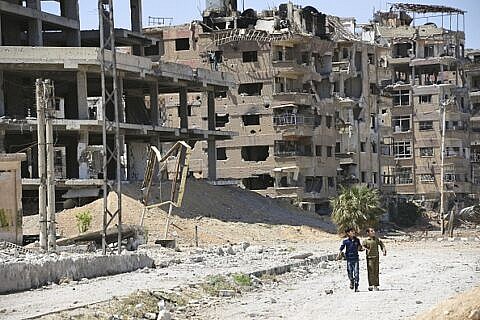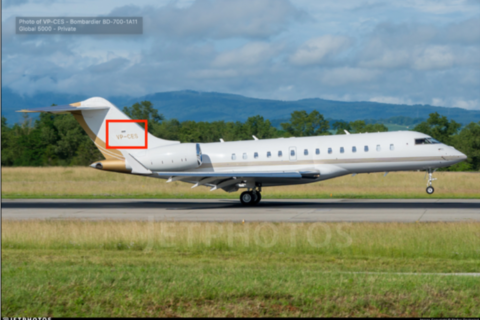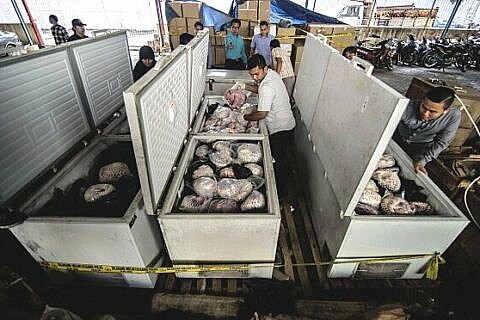Assets in Flight
Where there’s smoke, there’s fire – and money is usually not far behind. And in Libya’s case, Russian trade and customs data confirmed the aerial delivery of bank notes to the Khalifa Haftar-backed government in Eastern Libya. Once inside the country, foreign commercial air freight providers based in the former Soviet Union appear to distribute hard currency to far-flung outposts of the warring sides. This post traces the delivery of Russian-produced banknotes to General Haftar’s forces in Libya – and profiles the actors behind the trade.
Assets in Flight: Libya’s Flying Treasuries #
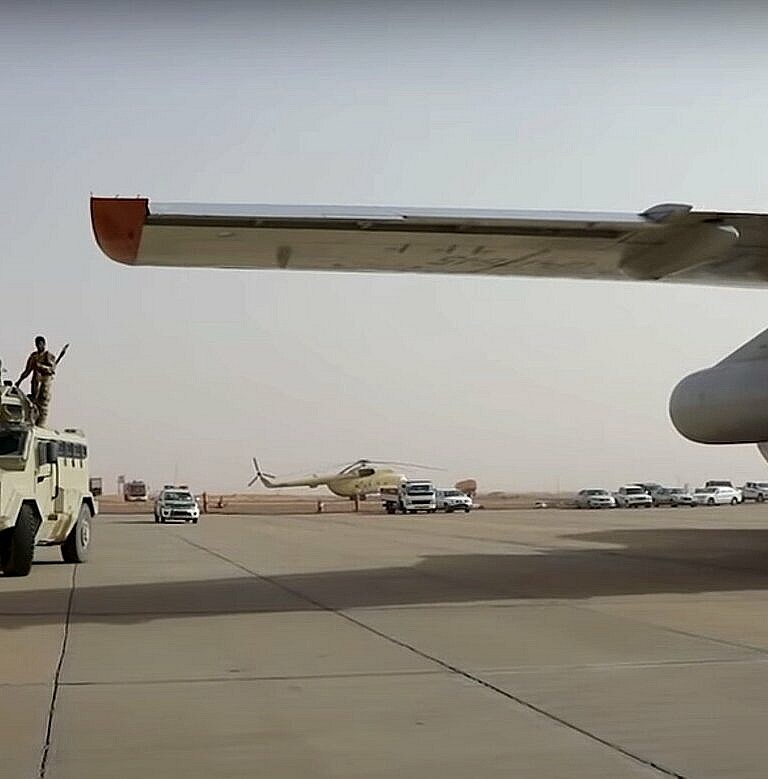
Peter Kirechu, Program Director, Conflict Finance and Irregular Threats
Where there’s smoke, there’s fire – and money is usually not far behind. And in Libya’s case, Russian trade and customs data confirmed the aerial delivery of bank notes to the Khalifa Haftar-backed government in Eastern Libya. Once inside the country, foreign commercial air freight providers based in the former Soviet Union appear to distribute hard currency to far-flung outposts of the warring sides. This post traces the delivery of Russian-produced banknotes to General Haftar’s forces in Libya – and profiles the actors behind the trade.
On January 29, 2019, a Youtube account operated by forces linked to Libyan General Khalifa Haftar released a video documenting the aerial delivery of multiple crates containing unspecified bank notes in Southern Libya. The transport aircraft – an Ilyushin (IL-76) cargo aircraft, Registration Number UP-I7645 – reportedly travelled from Benghazi. According to visual evidence, the plane appeared to be operated by Sigma Airlines, a Kazakhstan-based air freight company. In 2019, the same company was identified by UN investigators as one of four commercial air freight providers operating inside Libya in potential breach of the 2011 UN weapons embargo.
Sigma Airlines Ilyushin IL76D (Registration Number: UP-I7645) reportedly arriving in Tamanhant, Southern Libya from Benghazi
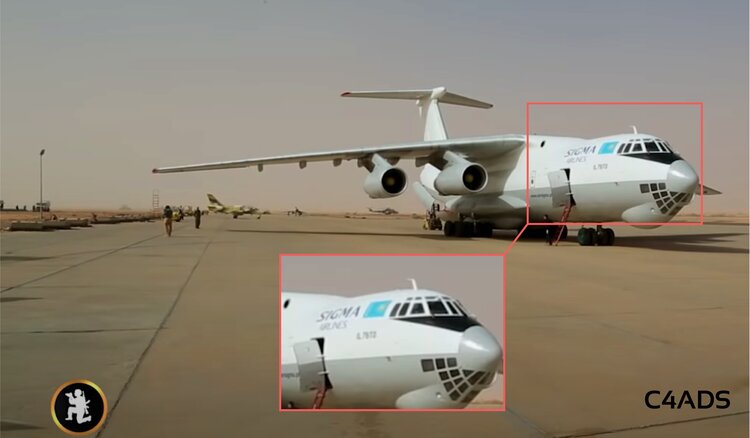
The January 29 video included interviews with personnel at the airbase who described the cargo as a cash delivery from the “Central Bank in Eastern Libya” destined for local distribution to commercial banks in the South. The video also included multiple images of wooden crates transferred from the cargo hold onto vehicles waiting nearby. Each visible crate bore the stamp: “CBL, Co. of January 31, 2017., Al Bayda, Libya”. The “CBL” stamp appeared to be a likely abbreviation for the Central Bank of Libya’s branch in Al Bayda , the parliamentary seat of Libya’s rival eastern government.
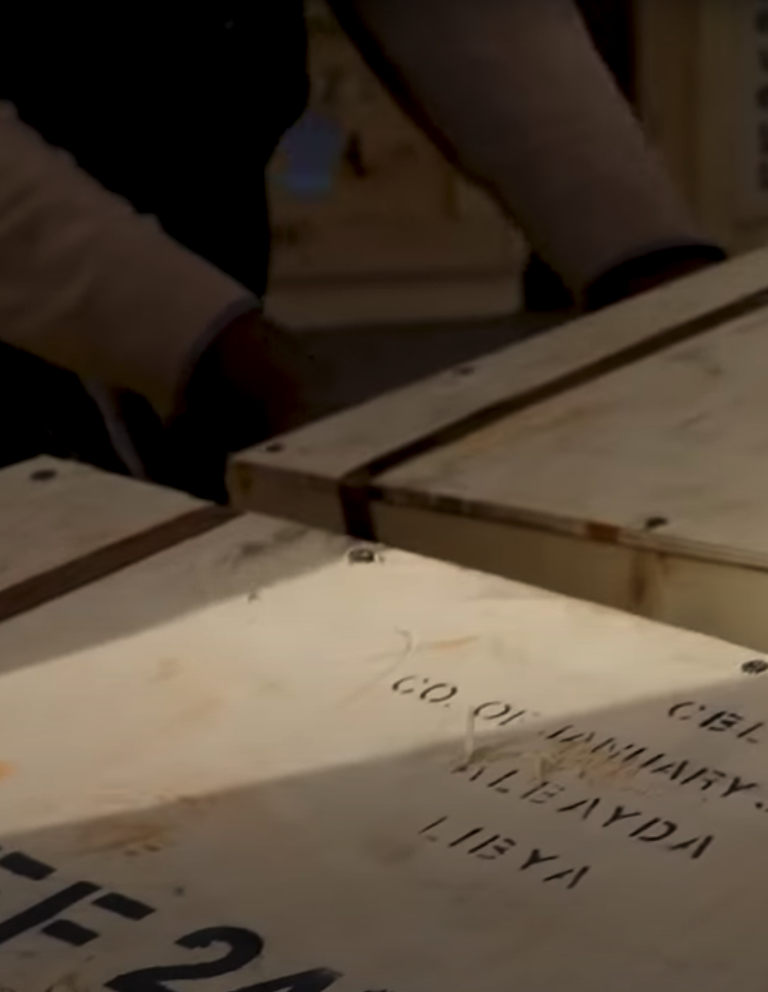
This alleged aerial delivery of hard currency is itself not surprising. Libya has been gripped by a long-running currency crisis exacerbated by the 2014 split of the Libyan Central Bank into two rival factions. This division was sparked by a wider political crisis that, in 2014, divided an already-feeble transitional government into eastern and western blocs. This division re-ignited conflict between the internationally-backed Government of National Accord (GNA) – based in Tripoli – and its eastern rival that operates out of Tobruk, Al Bayda, and Benghazi.
Resumed fighting disrupted the already-precarious ground transportation of cash reserves from Central Bank headquarters to branches in the Libyan interior. And with shifting lines of territorial control, the aerial movement of currency became an important, and more secure, alternative. Much of this domestic aerial traffic is blocked from public view. However, sporadic disclosures such as the January 29, 2019 Youtube revelation re-ignited public interest in the logistics behind these aerial deliveries – and the potential role of foreign actors in these transfers. This interest is backed by public reporting of Russia’s role in the printing and delivery of alternative bank notes to General Khalifa Haftar and the Eastern government – an aerial operation that dates back to 2016.
The Hunt for Libya’s Foreign-Printed Bank Notes Through Open Data #
Through the combination of customs, trade, and open source flight data, C4ADS researchers dug further into the mechanics of hard currency transfers into Libya. Our research uncovered a years-long pipeline of cash-related exports likely sent to each of Libya’s rival governments by the United Kingdom (UK), Russia, and the United Arab Emirates (UAE) among others.
C4ADS analysis identified the recorded transfer of an estimated $28 million (approximately $38 million Libyan dinars) in currency printed in Russia between May 2016 and September 2018. These transfers appeared in Russian trade data as dispatches – by air – to the Central Bank of Libya branch in Al Bayda. This same branch of the Central Bank appeared imprinted on the cash-filled boxes flown to the Haftar-controlled airbase in Southern Libya during the January 29, 2019 incident.
Elsewhere, publicly available trade data accessed through UN Comtrade revealed that the United Kingdom was the top exporter of bank note-related products sent to Libya between 2014 and 2019. UK exports were followed closely by Russia and the United Arab Emirates (UAE), both of which materially support Khalifa Haftar’s government in the East. The UK and Russian exports were reportedly printed by two commercial companies – De La Rue (UK) and Goznak (Russia) – with the end recipients being the two rival Central Bank branches in Tripoli and Al Bayda, respectively.
Whereas public data is short on the modes of delivery used by the UK and the UAE, Russian trade and customs data reviewed by C4ADS identified at least 18 air-borne bank-note shipments destined for Libya’s Eastern government. Open flight data sources also traced Sigma Airlines, the Kazakhstan-based company involved in the January 29 delivery, to a commercial network operating through the United Arab Emirates, Ukraine, Jordan, and Belarus. Together, these two data sources suggest that aircraft play a prominent role in how foreign-printed bank notes enter the country, and how they are distributed thereafter.
The Trade-Based View of Libya’s Foreign Currency Infusions #
According to the United Nations International Trade Statistics Database (also known as UN Comtrade), approximately $227 million in bank notes and other related currency products were exported to Libya between 2014 and 2019. These amounts represent the total number of currency-related exports to Libya as reported by UN member states and aggregated through the Harmonized Commodity Description and Coding System (also known as the HS Code System).
The HS Code system classifies import and exports that are similar in type into in six-digit categories. Newly issued bank notes, are, for instance, grouped into HS code category: 49.07.00. While UN Comtrade reporting has many deficiencies, it does provide an initial measure of the amounts and values in trade that countries publicly report. It also provides a comparable measure for the amount of trade that is withheld from public reporting when compared to domestic trade and customs records.
https://d3p7tp36uhgn6z.cloudfront.net
Between 2014 and 2019, 14 countries declared exports to Libya within the HS 49.07.00 category. Several European Union-member countries reported as individual states i.e. Germany, France, and Ireland, while others simply reported collectively as the “EU-28”. Individually, the United Kingdom ranked first in all bank note-related exports to Libya between 2014 and 2019. Over the period studied, these exports amounted to approximately $91 million in total trade value.
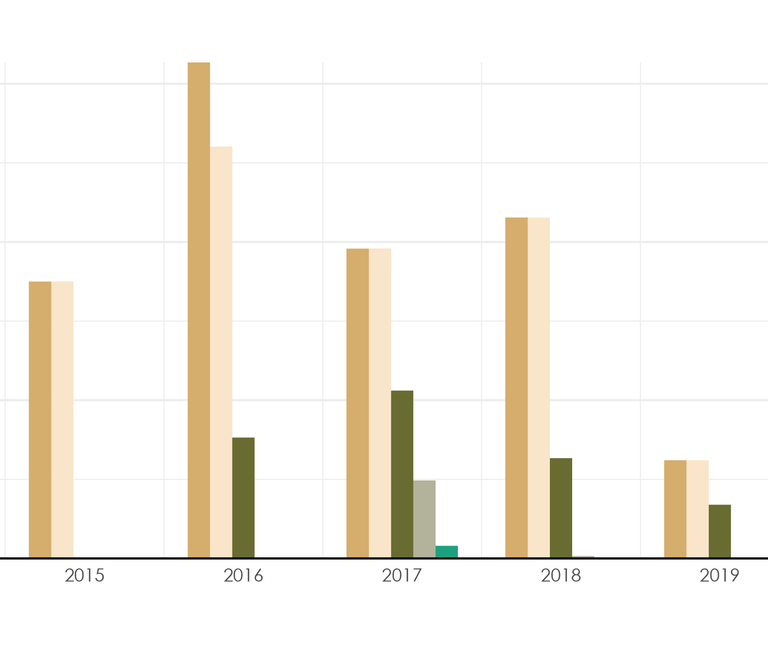
Russia and the United Arab Emirates (UAE) were a distant second and third, respectively. Russia reported approximately $27 million in exports within the HS 49.07.00 category between 2014 and 2019. And the United Arab Emirates reported approximately $5 million within the same HS category. But while the UK’s exports date back to the 2011 ouster of long-time Libyan dictator Muammar Ghaddafi, exports from Russia and the UAE first appeared in UN Comtrade data in 2016 and 2017, respectively. This timeline coincides with both Russia and the UAE’s escalated support for Khalifa Haftar and the rival Eastern government.
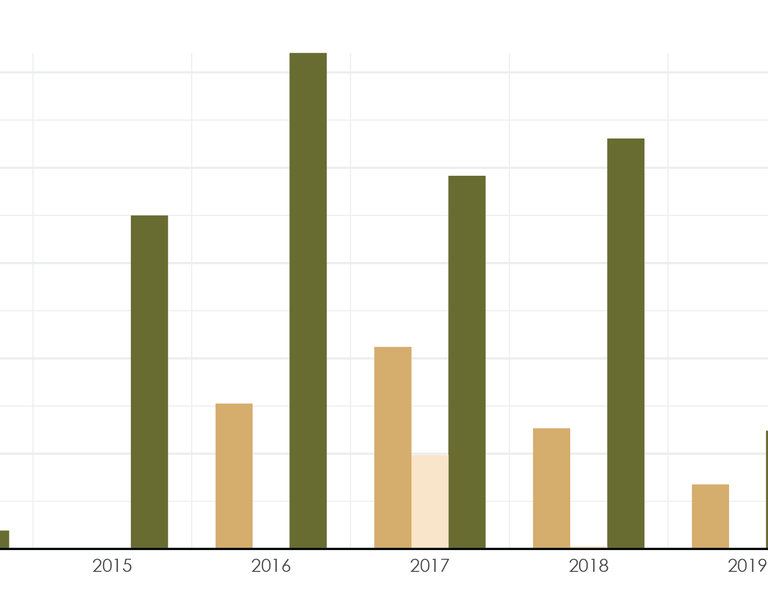
The $227 million in HS 49.07.00 exports declared through the UN Comtrade system is just a fraction of billions more reportedly dispatched to Eastern Libya from Russia between 2016 and 2019. This data does, however, provide a comparative basis from which to examine other export disclosures. UN Comtrade data is often short on details beyond the dates, values, and weights of any given import or export transaction. This gap can be filled by domestic customs and trade data sources that often reveal deeper logistical and financial details.
C4ADS’ review of Russian trade and customs data revealed approximately $23 million in bank note transfers from Russia to Libya made between May 2016 and September 2018. These exports were recorded as 18 separate events and closely mirrored the dates of transfer as reported to UN Comtrade. But unlike the reports made through UN Comtrade, the customs data reviewed by C4ADS confirmed both the departure and arrival locations of each delivery. These details revealed previously unreported aspects of Russia’s currency injections into Libya, and more specifically, the aerial nature of some of these transfers.
Tracing Russia’s Currency Airlift into Eastern Libya #
According to Russian customs data reviewed by C4ADS, Goznak (АО ГОЗНАК), a Russian state-owned mint, supplied approximately $23 million in 18 separate shipments to the Central Bank of Libya branch in Al Bayda, Eastern Libya. Goznak was listed as the consignor for each transfer while the Al Bayda branch of the Central Bank was listed as the consignee at the following address: “AL-BAYDA, RING ROAD.”
Each transfer was dispatched from the customs office at Perm International Airport (ТАМОЖЕННЫЙ ПОСТ АЭРОПОРТ ПЕРМЬ ПЕРМСКОЙ ТАМОЖНИ) with the intended destinations listed as “Al Abrag,” “LY.” The latter abbreviation – “LY” – corresponds to the internationally recognized two-letter acronym for Libya. Al Abraq airport (which is also known as Labraq) is the name of an international airport located in the Eastern Libyan city of Al Bayda, which at the time of export was controlled by Haftar’s forces.
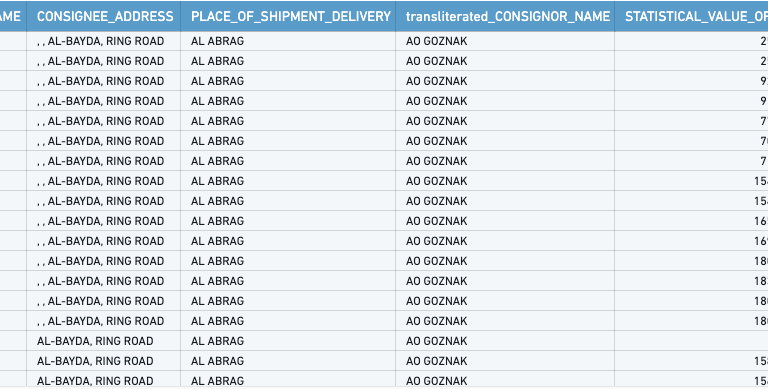
The bank notes were printed and packaged into batches of 20 and 50 double-sided notes according to the customs data reviewed by C4ADS. Each was produced at the Goznak facility in Perm and later passed through Perm customs before transfer onto unidentified aircraft as displayed below.
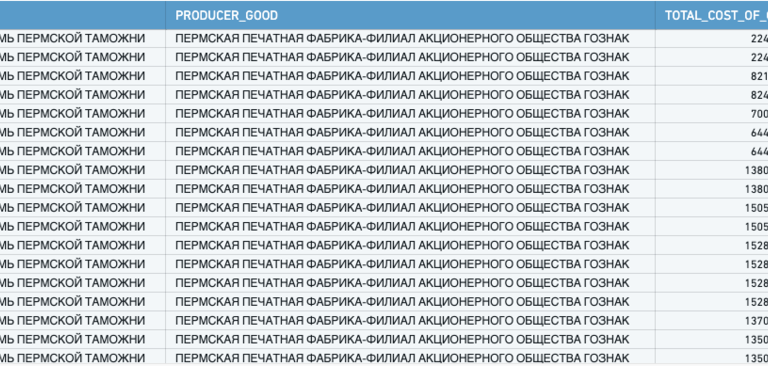
The reviewed customs data reviewed did not include specific details about the aircraft involved in each transfer. It did, however, confirm that at least 15 of the 18 transfers were intended for aerial delivery. The 20 and 50 Libyan dinar notes described in these transfers appeared to match publicly-reported deliveries from Russia in July 2016 and May 2017 in both type of currency and delivery timeline. Both of these deliveries entered Libya through the same Haftar-controlled airport of Al Abraq. This is the same airport that was listed as the intended destination for the 18 export transfers reported in Russia’s domestic customs and trade records.
Due to the lack of consistent and reliable open source flight data between Russia and Libya, tracking the direct movement of banknote shipments between the two countries is difficult. However, the aerial cash delivery documented in the January 29 Youtube video suggests that once inside the country, these foreign cash infusions are also potentially circulated by air due to the attendant risk of ground movement while fighting continues. Additionally, the use of foreign air freight companies such as Sigma Airlines raised additional questions about the operational history of foreign airlines inside Libya and within the region.
In the case of Sigma Airlines, C4ADS research found that the company, through a variety of partners, has a broad operational reach that stretches to Ukraine, the UAE, and Belarus. Several aircraft within its fleet have appeared and re-appeared in alleged service of Haftar-linked forces. These documented incidents suggest that the cash deliveries made by Sigma Airline aircraft in January, 2019 are just one of many services provided to Libya’s rival government in the East.
Sigma Airlines Aerial Links to Libya and the Levant #
In 2019, UN investigators identified Sigma Airlines as one of four commercial air cargo providers potentially operating in breach of the existing UN embargo on the transfer of military material to Libya. The other three were Deek Aviation FZE (UAE), Sky Prim Air SRL (Moldova), and Space Air Incorporated (UAE).
Sigma airlines (Сигма Эйрлайнс) (formerly Air Almaty) is headquartered in Almaty, Kazakhstan, but conducts some maintenance activities at a facility in Sharjah, UAE and the Al Baddad Aviation maintenance base in Aqaba, Jordan. It also has a listed sales office in the Ajman Emirate of the UAE. Here, the company shares an address and phone number with Reem Style Travel & Tourism LLC. Reem Style Travel & Tourism is a UAE-registered company that operates as a sales agent for both Sigma Airlines and ZetAvia, another air cargo company headquartered in Ukraine.
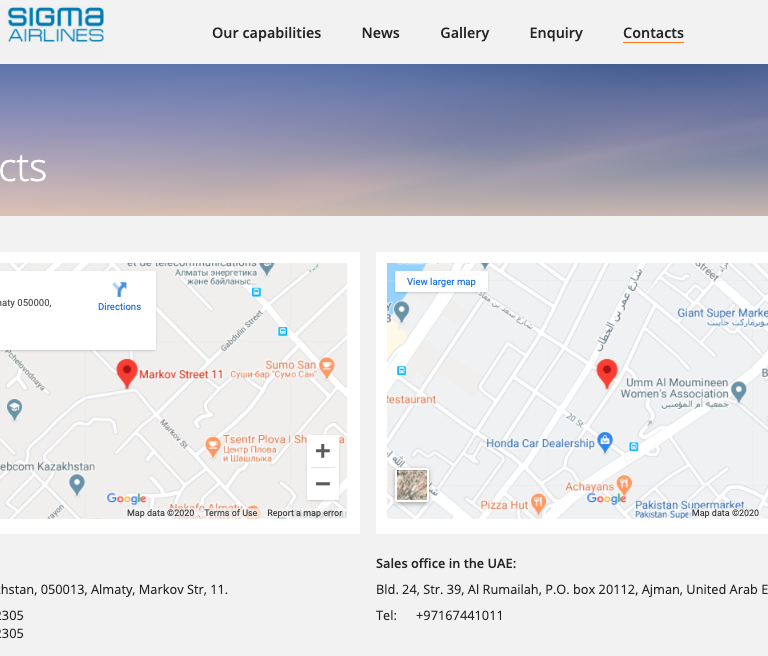

On its website, Sigma Airlines presently claims a fleet of two Ilyushin-76 TD aircraft, registration numbers: UP-I7601 and UP-I7655. However, the 2018 and 2019 versions of the company’s website list a different Ilyushin 76TD aircraft – Registration Number UP-I7645 – as part of its fleet. It is this third aircraft (UP-I7645) that is apparently shown in the January 29, 2019 Youtube video documenting aerial cash deliveries at the Haftar-controlled Tamanhant Airbase in Southern Libya.
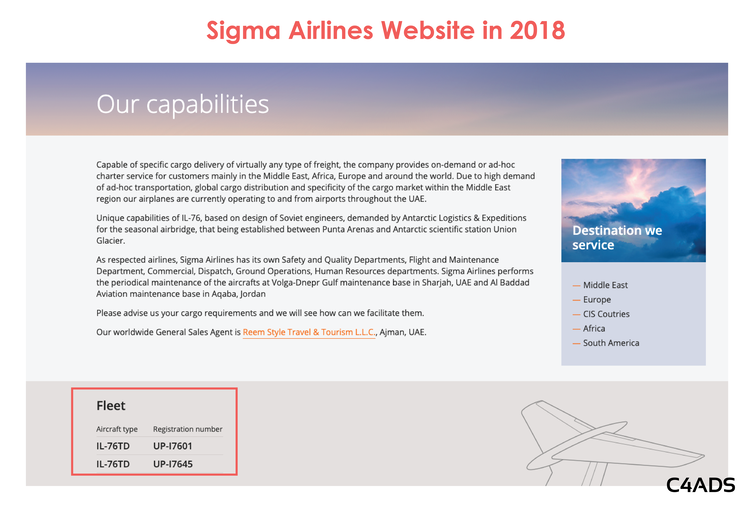
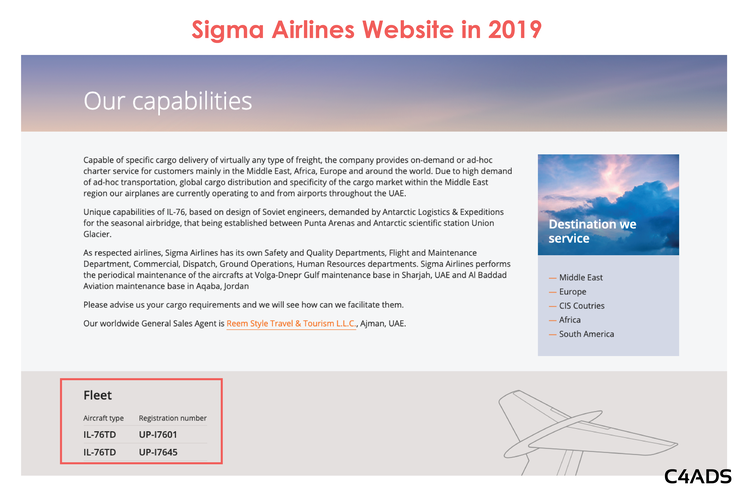
Desert Mirage: Two Illyushins #
While Sigma Airlines’ two Ilyushins appear on public fight radars, the available open source flight data is incomplete. It does not directly show entries into or exits from Libya, so it is difficult to understand the overall route taken. However, the timeline of these movements does coincide, in some cases, with the appearance of Sigma Airlines aircraft as documented throughout 2019.
In April and again in June 2019, one of the other two Sigma Airlines Ilyushin IL76TD aircraft – Registration Number: UP-I7601 – reportedly was spotted in northwestern Libya during General Haftar’s spring 2019 offensive on Tripoli. C4ADS’ review of open source flight data on the three Sigma Airlines aircraft revealed multiple forays in and out of the Sinai and Jordanian airspace within the same time period.
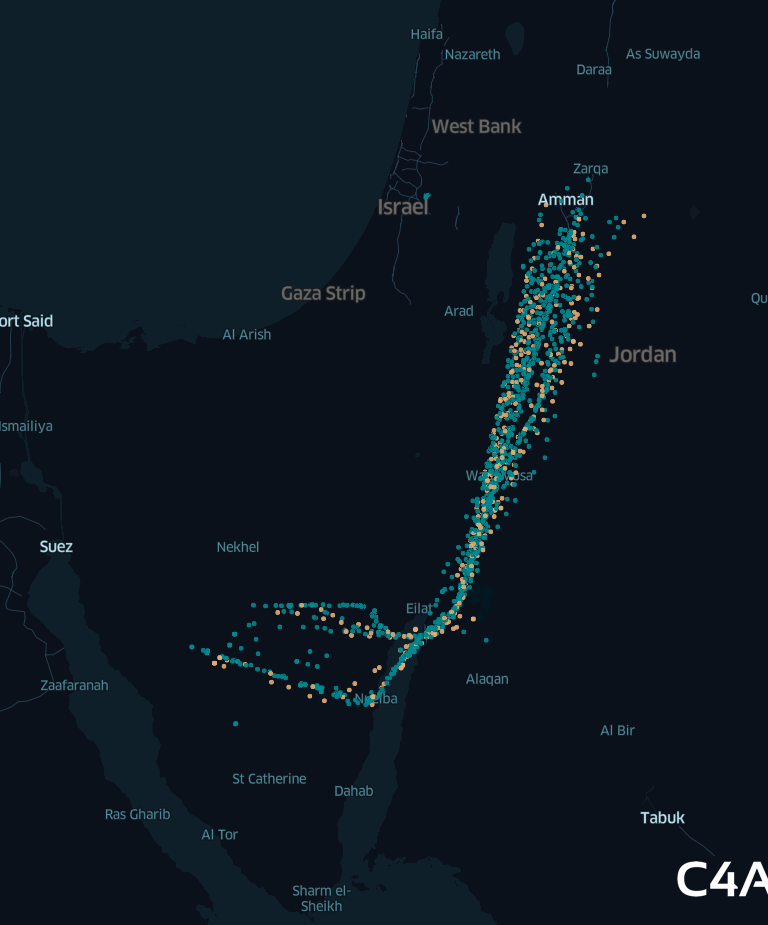
Despite gaps in the available flight data, Sigma Airlines aircraft movements through the Sinai and the Levant may point to a potential airbridge connecting Libya to Jordan through the Sinai. The available open source flight data does suggest that Sigma Airlines aircraft provide a diverse set of services – including the aerial delivery of hard currency – to actors in Libya. Through the combination of flight and trade data, the current research identifies at least one pathway through which currency products are first delivered into Libya, and then circulated internally through commercial air cargo companies such as Sigma Airlines.
Conclusion #
Visibility into conflict logistics is often difficult – especially in the open source – though not entirely impossible. The combination of open source data tools, including publicly available flight, trade, and customs data, can expose critical components of commonly opaque supply chains.
Where one discovery technique stops, the other begins. And in Libya’s case, Russian trade and customs data confirmed the aerial nature of bank note deliveries made to the Khalifa Haftar-backed government in Eastern Libya. Once inside the country, foreign commercial air freight providers such as Sigma Airlines appear to serve an internal distribution function as documented in the January 29, 2019 incident. These commercial providers sometimes move through transit corridors where their flight activity is visible. And there, a clearer image of their transnational operations emerges. Together, the combination of open flight and trade data unveils aspects of a conflict supply chain that may otherwise appear disconnected and unrelated. This approach ultimately extends the scope of inquiry beyond what is traditionally possible, especially in difficult conflict environments where data is scarce and access constrained.
